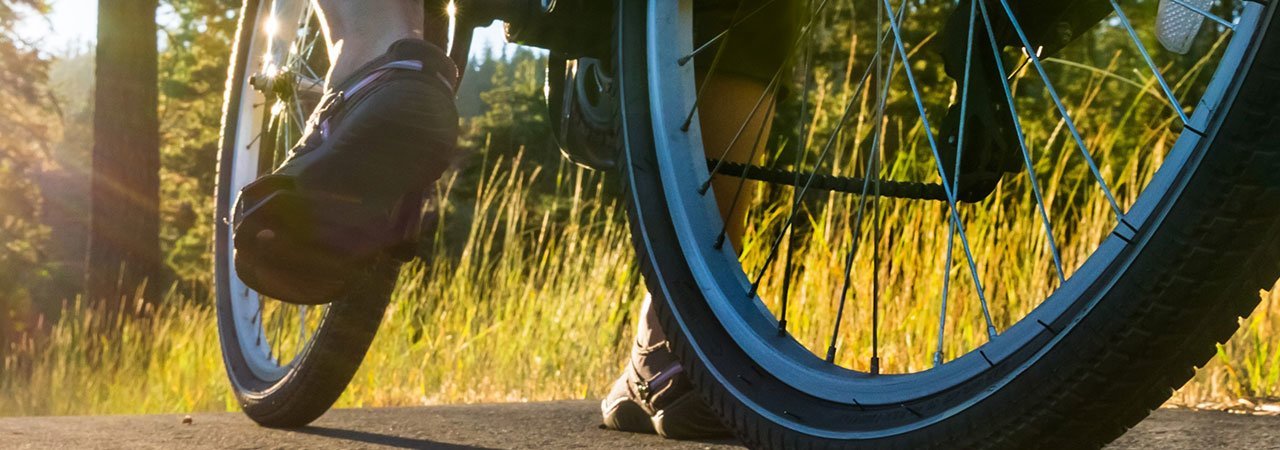
5 Best Mountain Bike Pedals
Best mountain bike pedals
If you’re new to mountain biking, you might underestimate the importance of the pedals. The truth is, choosing your mountain bike pedals can be one of the most significant decisions you make. The right mountain bike pedals can give you more power and control. They can even help you avoid unnecessary spills.
If you’re new to cycling with a mountain bike and feel overwhelmed by the wide variety of options available, don’t worry. We’re here to help. This concise guide will provide you with the essential information you need to make the best purchasing decision possible.
Considerations
When first thinking about the mountain bike pedals that you might like, it’s best to break them down into four categories: toe clip, clipless, flat, and combo pedals.
Toe clip
These pedals encase the front part of your foot, your toes, in a little bracket, which often features a strap. With these mountain bike pedals, you can basically wear your pedals like slippers. The benefit is that it gives you a little more control and power while pedaling.
Clipless
Clipless pedals require that you wear compatible footwear. They snap onto your shoes and provide the most power and control of all the mountain bike pedal types. The downsides are the cost and the inability of some riders to quickly disengage, which can be the cause of some embarrassing and painful spills.
Flat
Flat pedals are larger and heavier and resemble regular bike pedals. They can get in the way when negotiating rugged, uneven terrain and it’s possible for your foot to slip off if you don’t have it positioned correctly. The good news is that these are the least expensive pedals, and they make it easy to bail so you end up in the bushes and not on the rocks with a bike on top of you.
Combo
A combo pedal is a flat pedal that also has a clipless mount. These types of pedals are the most adaptable, but they can sometimes be frustrating. Rather than offering the best of both worlds, these types of pedals can be more of a compromise.
Mountain bike pedal features
Even within the broader categories, not all mountain bike pedals are created the same. There are a few features that you’ll want to think about before making your final decision.
Size and weight
The smaller and lighter the pedal the better. If you like flat pedals, you can find some high-quality lightweight ones, but you’ll need something large enough so your foot doesn’t keep slipping off.
Adjustability
If you have clipless pedals, you want to be able to adjust them so you can set how easily they attach and how much you can rotate your foot without disengaging.
Grip
You’ll need some kind of traction or grip on flat pedals to keep your foot from slipping off.
Maintenance
Chances are good that your mountain bike pedals are going to get muddy and take a beating. The easier they are to clean and repair or replace, the happier you will be.
FAQ
Q. Why are they called “clipless” mountain bike pedals if they have a clip?
A. The term “clipless” doesn’t come from comparing flats to clipless pedals. It originated when mountain bike pedals evolved from toe clips and straps to a different way of securing feet to the pedals. Since riders were no longer “clipping” their toes into a toe clip, the newer design picked up the name “clipless.”
Q. How do I use a clipless pedal?
A. If it’s your first time using a clipless pedal, you want to steady yourself on something so you won’t fall. To clip in, slide your foot forward along the pedal until you feel it’s in position, then press down. You will hear a click and the pedal will be attached to your foot. To unclip, simply twist your heel away from the bike and your foot will pop free.
Q. Why would I want to clip in?
A. To the beginner, fastening your feet to the pedals may sound like a crazy idea. If it does, you should probably consider flat pedals. However, once you’re ready for clipless mountain bike pedals, you’ll quickly learn that they provide far more power and control than any other type of pedal currently available.
